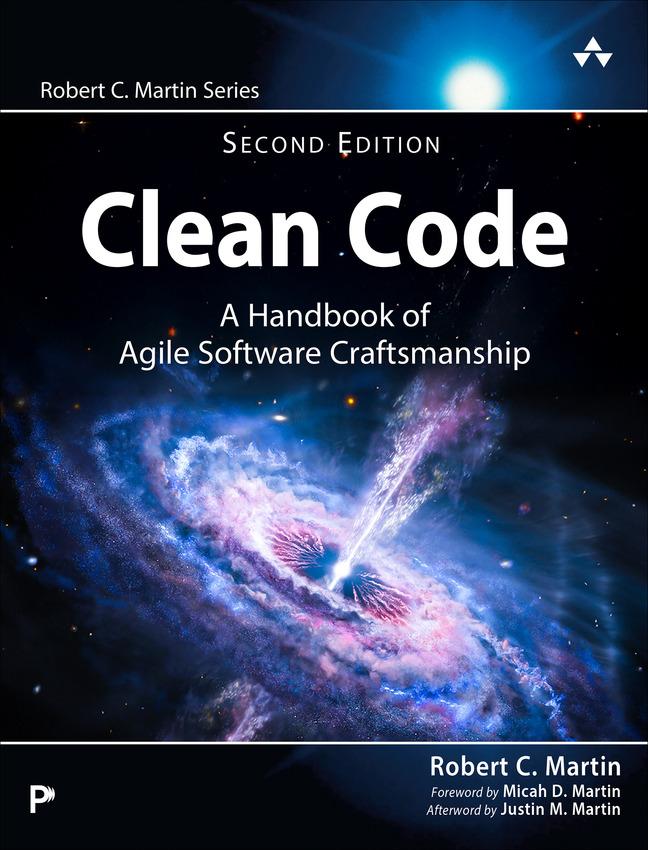NEU: Das eBook.de Hörbuch Abo - jederzeit, überall, für nur 7,95 € monatlich!
Jetzt entdecken
mehr erfahren
Zustellung: Sa, 25.10. - Mi, 29.10.
Noch nicht erschienen
VersandkostenfreiBestselling author Robert C. Martin brings new life and updated code to his beloved Clean Code book
With Clean Code, Second Edition, Robert C. Martin ("Uncle Bob") reinvigorates the classic guide to software craftsmanship with updated insights, broader scope, and enriched content. This new edition--a comprehensive rewrite of the original bestseller--is poised to transform the way developers approach coding, fostering a deeper commitment to the craft of writing clean, flexible, and maintainable code.
The book is divided into four parts: basic coding practices, design principles and heuristics, high-level architecture, and the ethics of craftsmanship. It challenges readers to critically evaluate code quality and reassess their professional values, ultimately guiding them to produce better software. This edition includes expanded coverage of testing disciplines, design and architecture principles, and multiple programming languages.
With Clean Code, Second Edition, Robert C. Martin ("Uncle Bob") reinvigorates the classic guide to software craftsmanship with updated insights, broader scope, and enriched content. This new edition--a comprehensive rewrite of the original bestseller--is poised to transform the way developers approach coding, fostering a deeper commitment to the craft of writing clean, flexible, and maintainable code.
The book is divided into four parts: basic coding practices, design principles and heuristics, high-level architecture, and the ethics of craftsmanship. It challenges readers to critically evaluate code quality and reassess their professional values, ultimately guiding them to produce better software. This edition includes expanded coverage of testing disciplines, design and architecture principles, and multiple programming languages.
- Design and architecture principles integrated with coding practices
- Coverage of more languages, including Java, JavaScript, Go, Python, Clojure, C#, and C
- Case studies for practical exercises in code transformation
- Techniques for writing good names, functions, objects, and classes
- Strategies for formatting code for maximum readability
- Comprehensive error handling and testing practices
- Productive use of AI tools for coding
- Soft skills and the ethics of programming
- SOLID principles of software design
- Management of dependencies for flexible and reusable code
- Professional practices and trade-offs in object-oriented design
Inhaltsverzeichnis
Foreword
Introduction
Introduction (from Long Ago)
Chapter 1: Clean Code
Part I: Code
Chapter 2: Clean That Code!
Chapter 3: First Principles
Chapter 4: Meaningful Names
Chapter 5: Comments
Chapter 6: Formatting
Chapter 7: Clean Functions
Chapter 8: Function Heuristics
Chapter 9: The Clean Method
Chapter 10: One Thing
Chapter 11: Be Polite
Chapter 12: Objects and Data Structures
Chapter 13: Clean Classes
Chapter 14: Testing Disciplines
Chapter 15: Clean Tests
Chapter 16: Acceptance Testing
Chapter 17: AIs, LLMs, and God knows What
Part II: Design
Chapter 18: Simple Design
Chapter 19: The SOLID Principles
Chapter 20: Component Principles
Chapter 21: Continuous Design
Chapter 22: Concurrency
Part III: Architecture
Chapter 23: The Two Values of Software
Chapter 24: Independence
Chapter 25: Architectural Boundaries
Chapter 26: Clean Boundaries
Chapter 27: The Clean Architecture
Part IV: Craftsmanship
Chapter 28: Harm
Chapter 29: No Defect in Behavior or Structure
Chapter 30: Repeatable Proof
Chapter 31: Small Cycles
Chapter 32: Relentless Improvement
Chapter 33: Maintain High Productivity
Chapter 34: Work as a Team
Chapter 35: Estimate Honestly and Fairly
Chapter 36: Respect for Fellow Programmers
Chapter 37: Never Stop Learning
Afterword
Appendix
Bibliography
Index
Introduction
Introduction (from Long Ago)
Chapter 1: Clean Code
Part I: Code
Chapter 2: Clean That Code!
Chapter 3: First Principles
Chapter 4: Meaningful Names
Chapter 5: Comments
Chapter 6: Formatting
Chapter 7: Clean Functions
Chapter 8: Function Heuristics
Chapter 9: The Clean Method
Chapter 10: One Thing
Chapter 11: Be Polite
Chapter 12: Objects and Data Structures
Chapter 13: Clean Classes
Chapter 14: Testing Disciplines
Chapter 15: Clean Tests
Chapter 16: Acceptance Testing
Chapter 17: AIs, LLMs, and God knows What
Part II: Design
Chapter 18: Simple Design
Chapter 19: The SOLID Principles
Chapter 20: Component Principles
Chapter 21: Continuous Design
Chapter 22: Concurrency
Part III: Architecture
Chapter 23: The Two Values of Software
Chapter 24: Independence
Chapter 25: Architectural Boundaries
Chapter 26: Clean Boundaries
Chapter 27: The Clean Architecture
Part IV: Craftsmanship
Chapter 28: Harm
Chapter 29: No Defect in Behavior or Structure
Chapter 30: Repeatable Proof
Chapter 31: Small Cycles
Chapter 32: Relentless Improvement
Chapter 33: Maintain High Productivity
Chapter 34: Work as a Team
Chapter 35: Estimate Honestly and Fairly
Chapter 36: Respect for Fellow Programmers
Chapter 37: Never Stop Learning
Afterword
Appendix
Bibliography
Index
Produktdetails
Erscheinungsdatum
12. Oktober 2025
Sprache
englisch
Auflage
2nd edition
Seitenanzahl
672
Autor/Autorin
Robert Martin
Verlag/Hersteller
Produktart
kartoniert
ISBN
9780135398579
Entdecken Sie mehr
Bewertungen
0 Bewertungen
Es wurden noch keine Bewertungen abgegeben. Schreiben Sie die erste Bewertung zu "Clean Code" und helfen Sie damit anderen bei der Kaufentscheidung.








